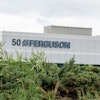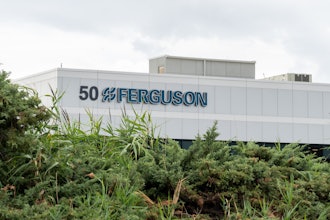BURNS HARBOR, Ind. (AP) — State inspections of piles of steelmaking waste at ArcelorMittal's sprawling complex along Lake Michigan have found that some of that waste has been stored outdoors for more than six months in violation of Indiana law.
An April 22 report by the Indiana Department of Environmental Management — based on inspections done in March and April at the company's Burns Harbor complex — found that one pile of waste had been stored outside for at least five years.
Three other waste piles had been outside for more than six months, including one the company had previously been cited for, the report found.
Valparaiso attorney Kim Ferraro of the Legal Environmental Aid Foundation of Indiana said state law presumes that unless the company proves otherwise, material is considered open dumped after six months.
"If something's out there six months or longer and they haven't provided proof they fit it into reuse or recycle, it's open dumped," she told the Post-Tribune of Merrillville.
IDEM's report said that it has not enforced that law against ArcelorMittal because the company periodically recycles some of the waste and has a pending application for a landfill where unused waste would be disposed of at the Porter County site.
IDEM's report looked at several waste streams stored at the complex, which covers about five square miles some 10 miles east of Gary.
One of those piles includes furnace sludge, burnt lime and rubble. The Post-Tribune, citing a confidential source within the agency, has reported that the pile is one that some IDEM staff call "Easterly's Pile," a reference to IDEM Commissioner Tom Easterly.
Easterly was the top environmental manager at one of ArcelorMittal's predecessors, Bethlehem Steel Corp., from 1994 to 2000. He became IDEM commissioner in January 2005.
The Post-Tribune said the report shows that waste area consists of a 900-foot-long pile that includes a type of furnace sludge and rubble interspersed with burnt lime.
IDEM spokeswoman Amy Hartsock said the 900-foot-long pile is mostly slag and fill material and is used as a roadway to reach the middle of a 27-acre, horseshoe-shaped basin where waste materials are mixed and dried for later use in sintering operations.
Ferraro said the report answers some questions about that site but leaves many unanswered, including why it continues to grow and whether the materials stored there might pose a threat to Lake Michigan, which is about 200 feet away.
Bruce Palin, assistant commissioner for the Office of Land Quality, said the recent inspections were IDEM's most detailed to date of the wastes stored outside by the company.
While they found some wastes had been stored for more than six months in violation of state law, he said ArcelorMittal will not be cited because of its pending landfill permit and because it is reusing and recycling some of the wastes in steelmaking processes.
He said the company also has specified how it intends to manage the materials in the proposed landfill.
"Given that they have kind of a compliance schedule, a way to get back into compliance by putting those materials in this landfill, we have not considered it a violation," he said.
Palin said IDEM has no plans to test the site's wastes to determine if there are high levels of hazardous waste such as selenium and cadmium, because previous testing by an independent lab hired by ArcelorMittal has shown no areas for concern.
"We feel comfortable that we know enough about what they are and what they contain," he said.
Ferraro said those tests were done in 1999 for the U.S. Environmental Protection Agency, and that a lot may have changed since then.
Hartsock said the report confirms data the company had previously reported and should not cause any changes in the agency's review of ArcelorMittal's landfill permit application.


















